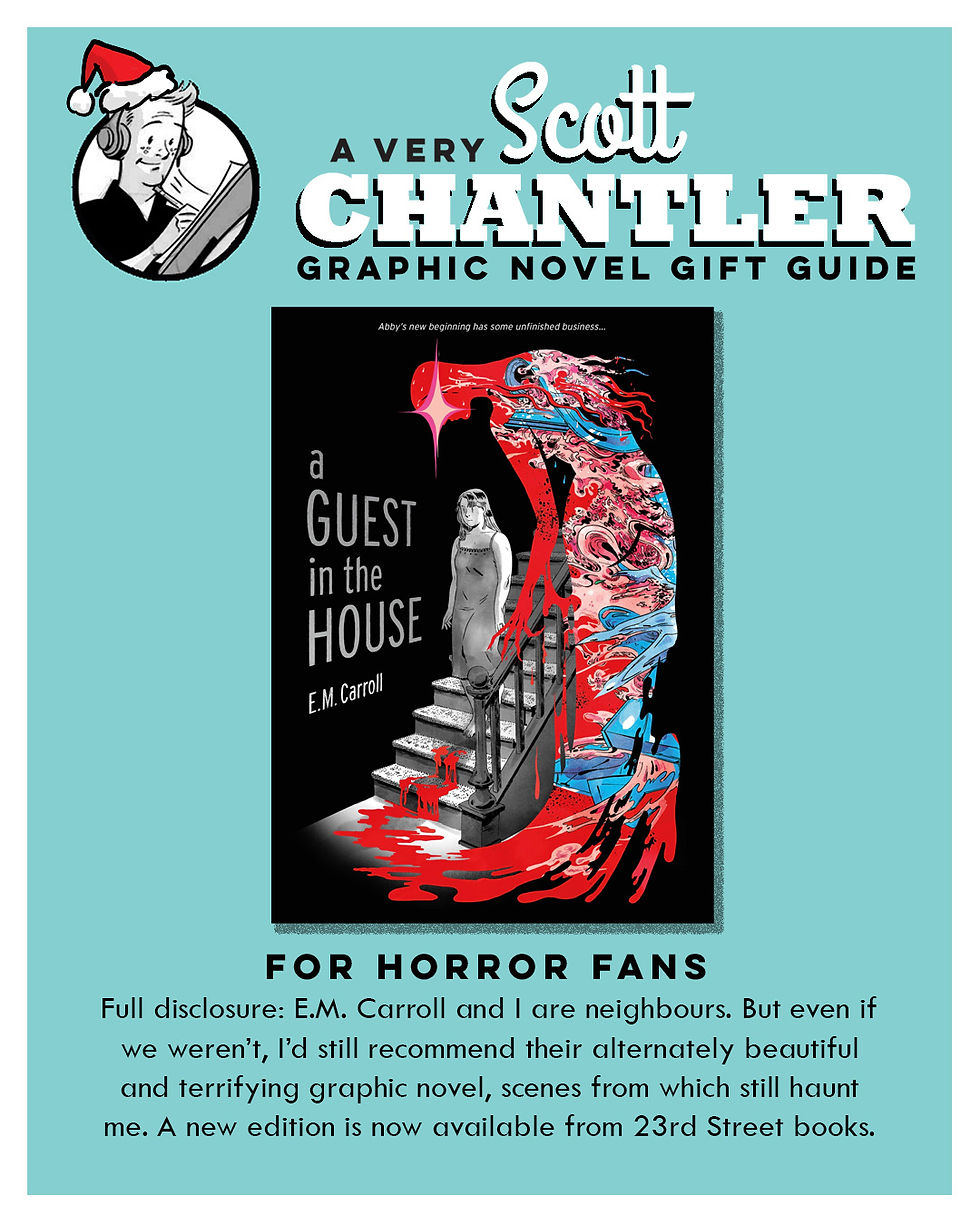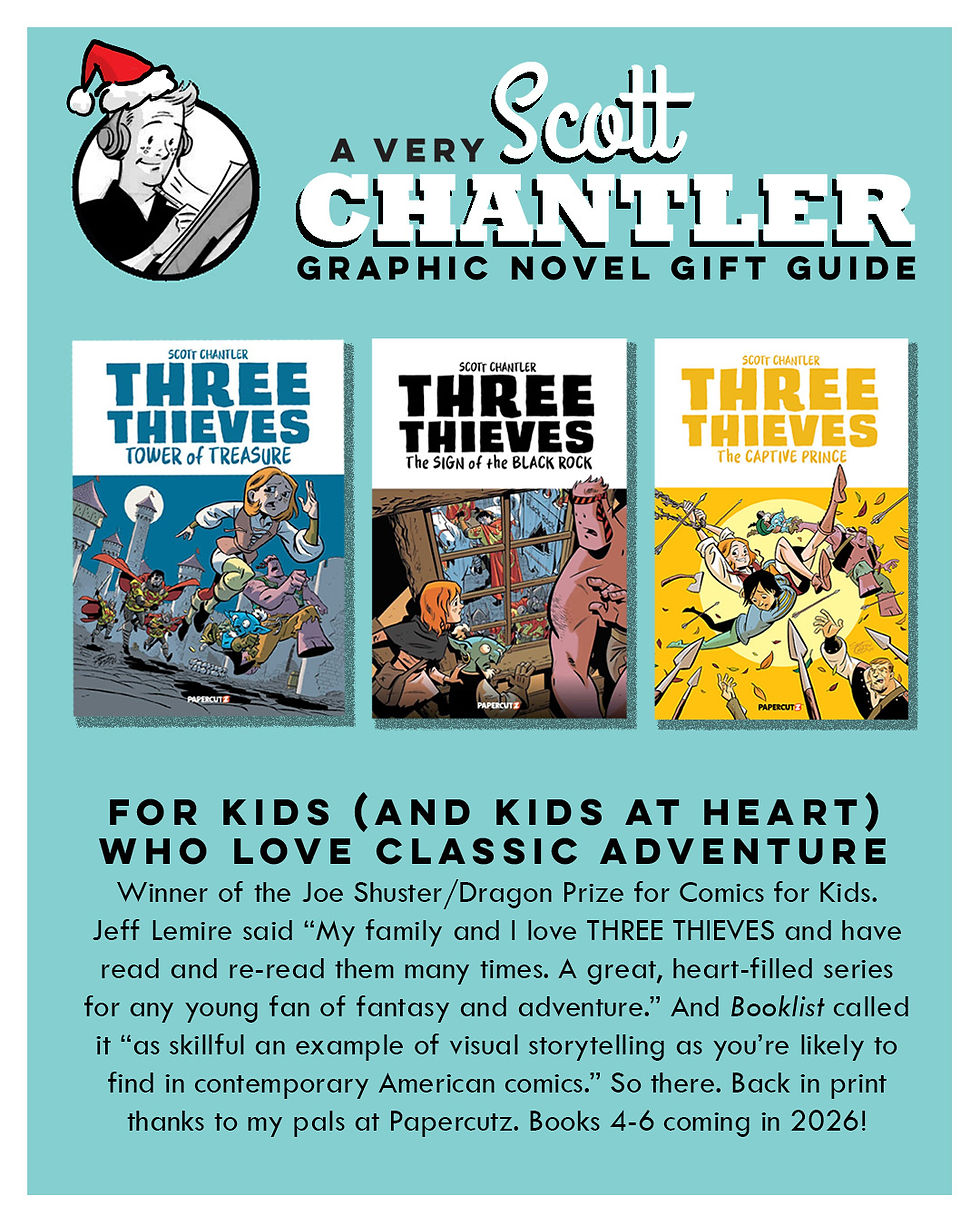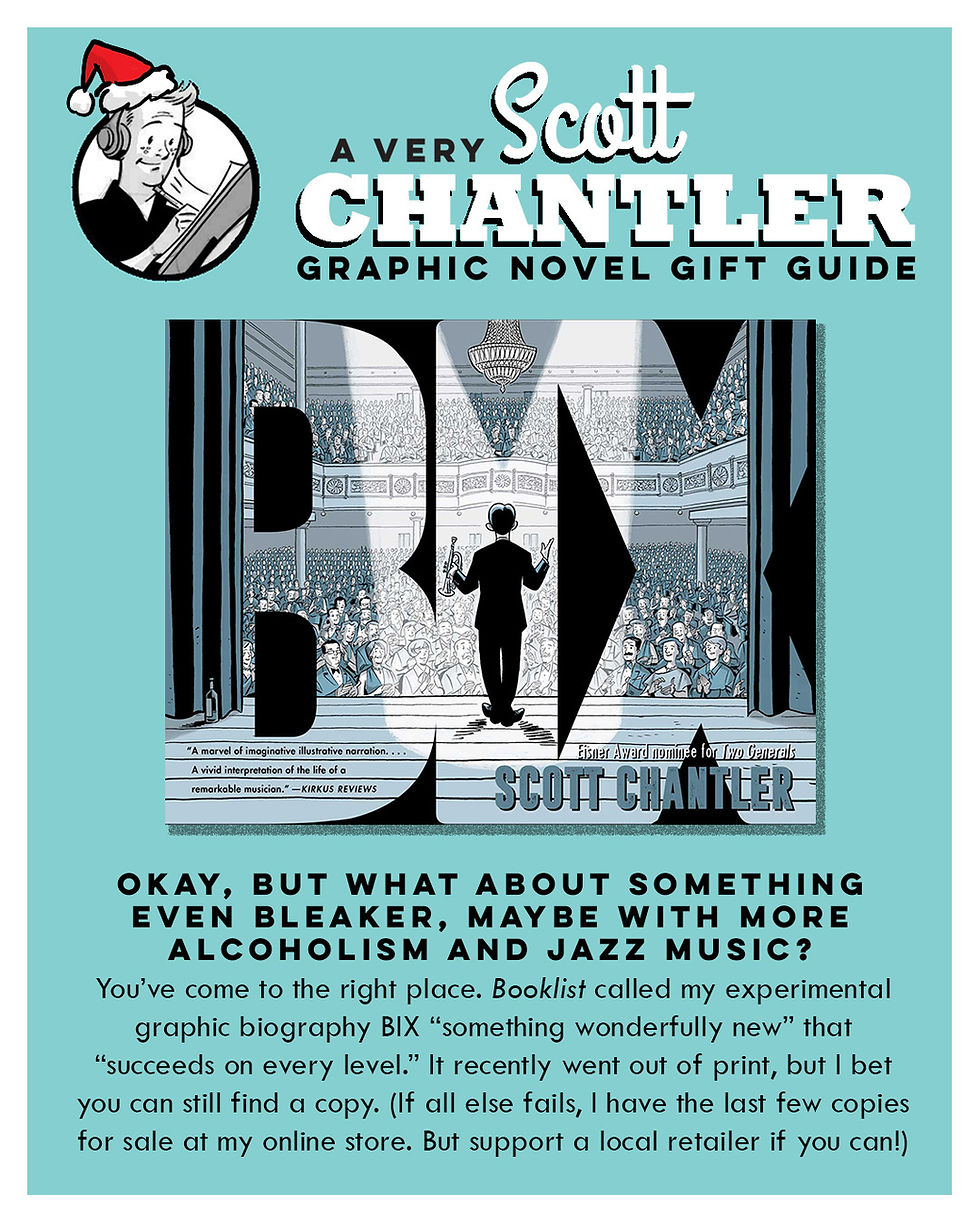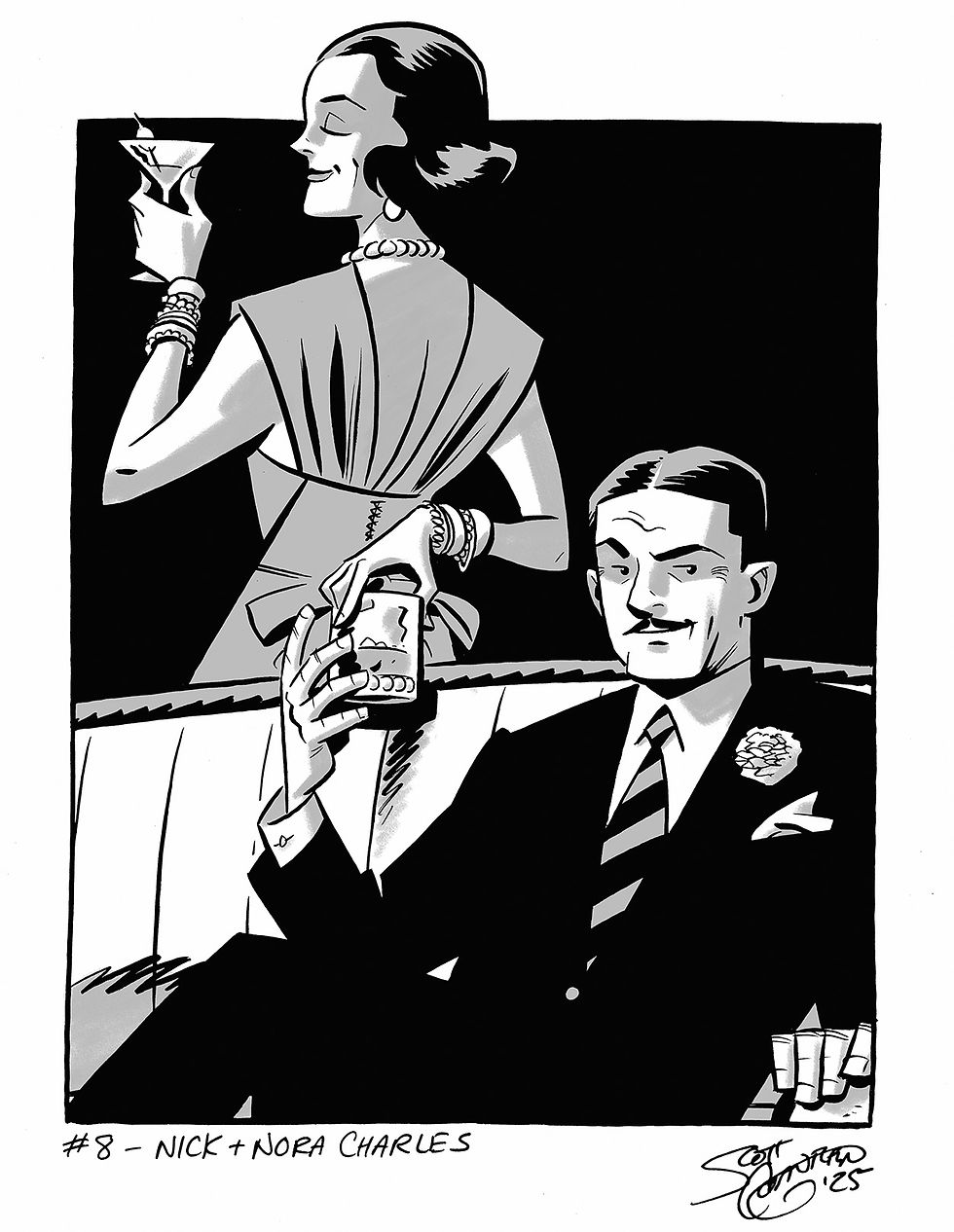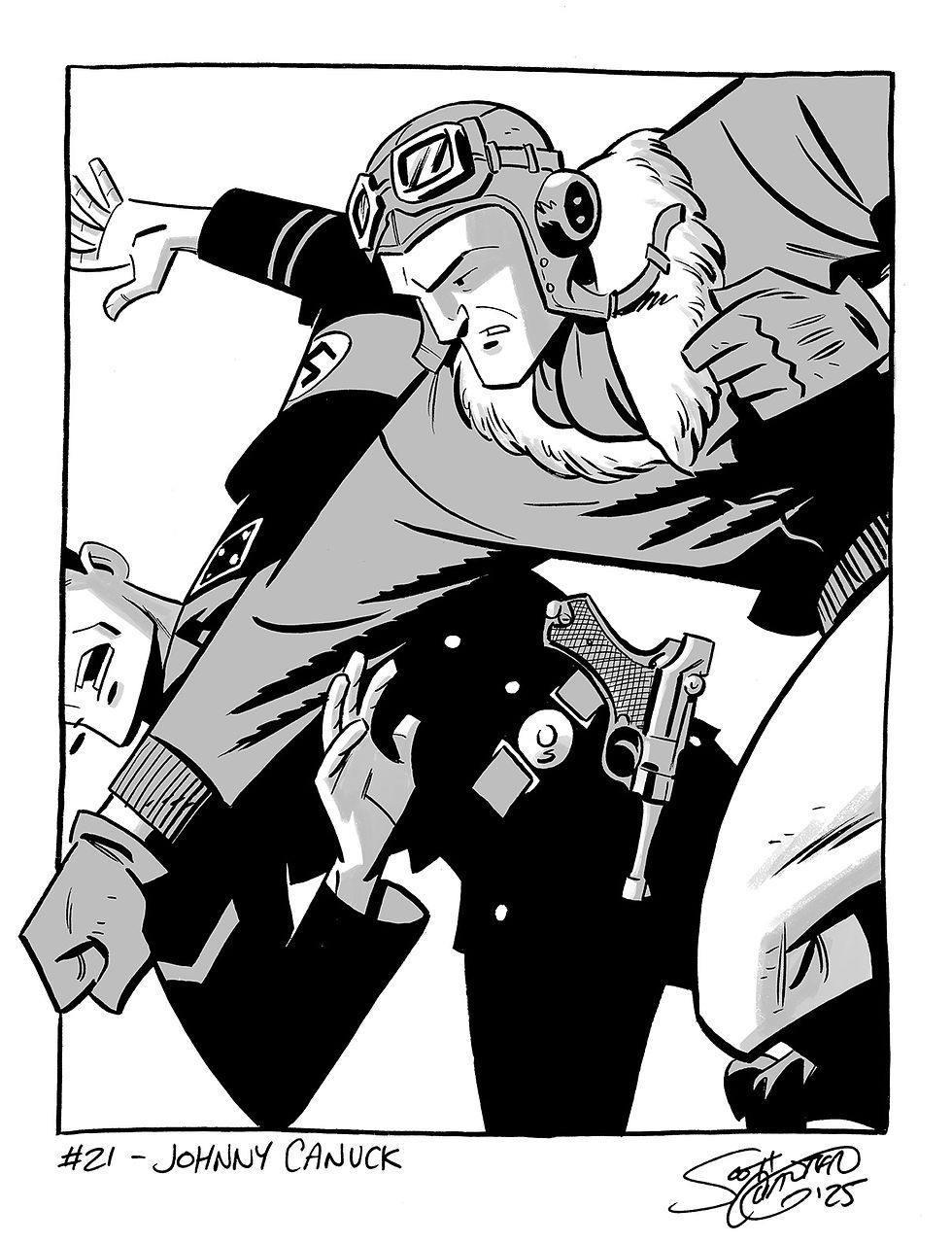As promised in my previous post, here's a second round of holiday gift book suggestions, this time by people other than myself. You know, in case the store is out of my books or something.
Seriously, though, you can't go wrong with any of these. I tried to stick to titles from the last few years, because I assume we've all read Bone and Maus by now.
Happy shopping (and reading)!



